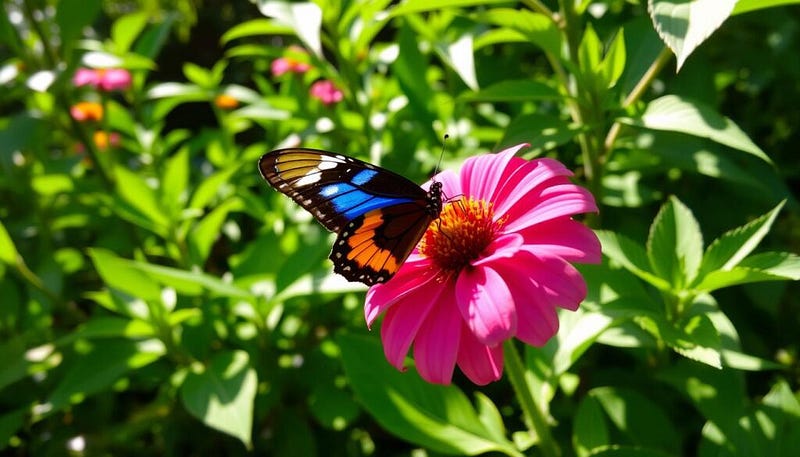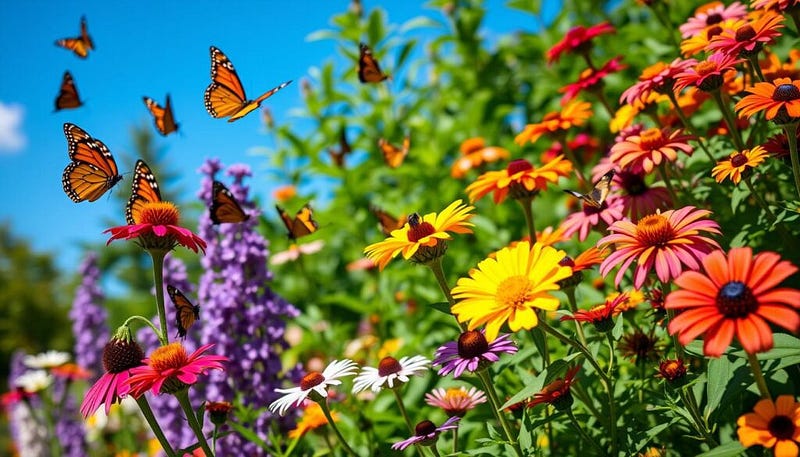Butterfly Plant: How to Grow and Care for This Pollinator Magnet
Do you love watching butterflies dance in your garden? Wondering how to attract them? The butterfly plant is a great choice. It turns your garden into a colorful haven for these beautiful creatures.
Key Takeaways
Butterfly plants, like the butterfly bush, are easy to care for. They do well in many climates.
These plants offer a sweet treat for butterflies and hummingbirds. They make your garden lively and colorful.
Planting, pruning, and caring for your butterfly plants is crucial. It helps them thrive and attract more pollinators.
Some butterfly bushes can be invasive. It’s important to choose wisely for your garden.
Adding companion plants can make your garden even more appealing to butterflies.
What is a Butterfly Plant?
Common Names and Botanical Background
Butterfly plants, also known as butterfly bushes, are a favorite in many gardens. They attract a variety of pollinators. These shrubs belong to the Buddleja genus and the Scrophulariaceae family.
They come in many colors, like purples, pinks, whites, and yellows. This makes them a popular choice for gardeners.
Butterfly bushes are known for their beauty and low maintenance. They can handle harsh weather and pollution well. They also resist pests, drought, and stress.
They prefer well-drained soil and full sun. Planting them in groups, 5 to 6 feet apart, is best.
Butterfly bushes attract many pollinators, like butterflies and bees. They grow 6 to 10 feet tall and 4 to 10 feet wide. They reach full size in 1 to 2 seasons.
Why Grow Butterfly Plants?
Benefits of Attracting Pollinators to Your Garden
Adding butterfly-friendly plants to your garden brings many benefits. These plants offer vital nectar for butterflies and hummingbirds. They also boost your garden’s health and diversity.
One big plus of plants that attract butterflies and hummingbirds is their support for local ecosystems. They help many beneficial insects, like bees and moths. These insects are key for many plants to reproduce.
Moreover, butterfly plants make your garden colorful and interesting. The sight of butterflies and hummingbirds adds to your garden’s beauty. It becomes a lovely place for everyone.
Another advantage of plants that attract hummingbirds and butterflies is their role in their life cycles. Some butterflies, like Monarchs, need certain plants to lay eggs and feed their caterpillars. By planting these, you help these creatures thrive.
In summary, growing butterfly plants improves your garden’s biodiversity and balance. It also lets you enjoy the beauty of these amazing pollinators.

Choosing the Right Butterfly Plant Variety
Choosing the right butterfly plant can really help attract these beautiful creatures to your garden. These plants come in all sizes, from small shrubs to tall ones. They vary in height, with some reaching up to 7 feet tall and wide.
Most butterfly plants need full sun to grow well and bloom. They come in many colors, like purple, yellow, and pink. This variety adds beauty to any garden.
Butterfly plants also fit into different hardiness zones, from zones 5–10. This means they can grow in various climates. It’s important to pick non-seeding varieties to keep your garden tidy.
Buddleia ‘Asian Moon’
Buddleia ‘Blue Chip’
Buddleia ‘Blue Chip Jr.’
Buddleia ‘Ice Chip’ (Formerly ‘White Icing’)
Buddleia ‘Inspired Pink’
Buddleia ‘Pink Micro Chip’
Buddleia ‘Purple Haze’
FLUTTERBY GRANDÉ™ Blueberry Cobbler Nectar Bush
FLUTTERBY GRANDÉ™ Peach Cobbler Nectar Bush
FLUTTERBY GRANDÉ™ Sweet Marmalade Nectar Bush
FLUTTERBY GRANDÉ™ Tangerine Dream Nectar Bush
FLUTTERBY GRANDÉ™ Vanilla Nectar Bush
FLUTTERBY PETITE™ Snow White Nectar Bush
FLUTTERBY™ Pink Nectar Bush
Miss Molly
These non-seeding varieties prevent invasive growth. They offer a beautiful way to attract pollinators to your garden.

Planting and Growing Conditions for Butterfly Plants
Sun Exposure and Soil Requirements
Butterfly plants like the red admiral butterfly host plant, swallowtail butterfly plants, and butterfly bush need lots of sunlight. They thrive in full sun, needing at least 6 hours of direct sunlight daily. Without enough sun, they become sparse and weedy.
These plants also prefer well-drained, average soil. The soil should be slightly acidic to neutral, with a pH of 6.0 to 7.0.
Water and Fertilizer Needs
Keeping the right moisture level is key for what plants do monarch butterflies like and other butterfly plants. They do best in medium-moisture environments. Avoid drought or too much water.
Water them with about 1/2 inch of water per week. This can come from rain or irrigation. For fertilizer, a light layer of compost over the roots in spring is enough.



Comments
Post a Comment